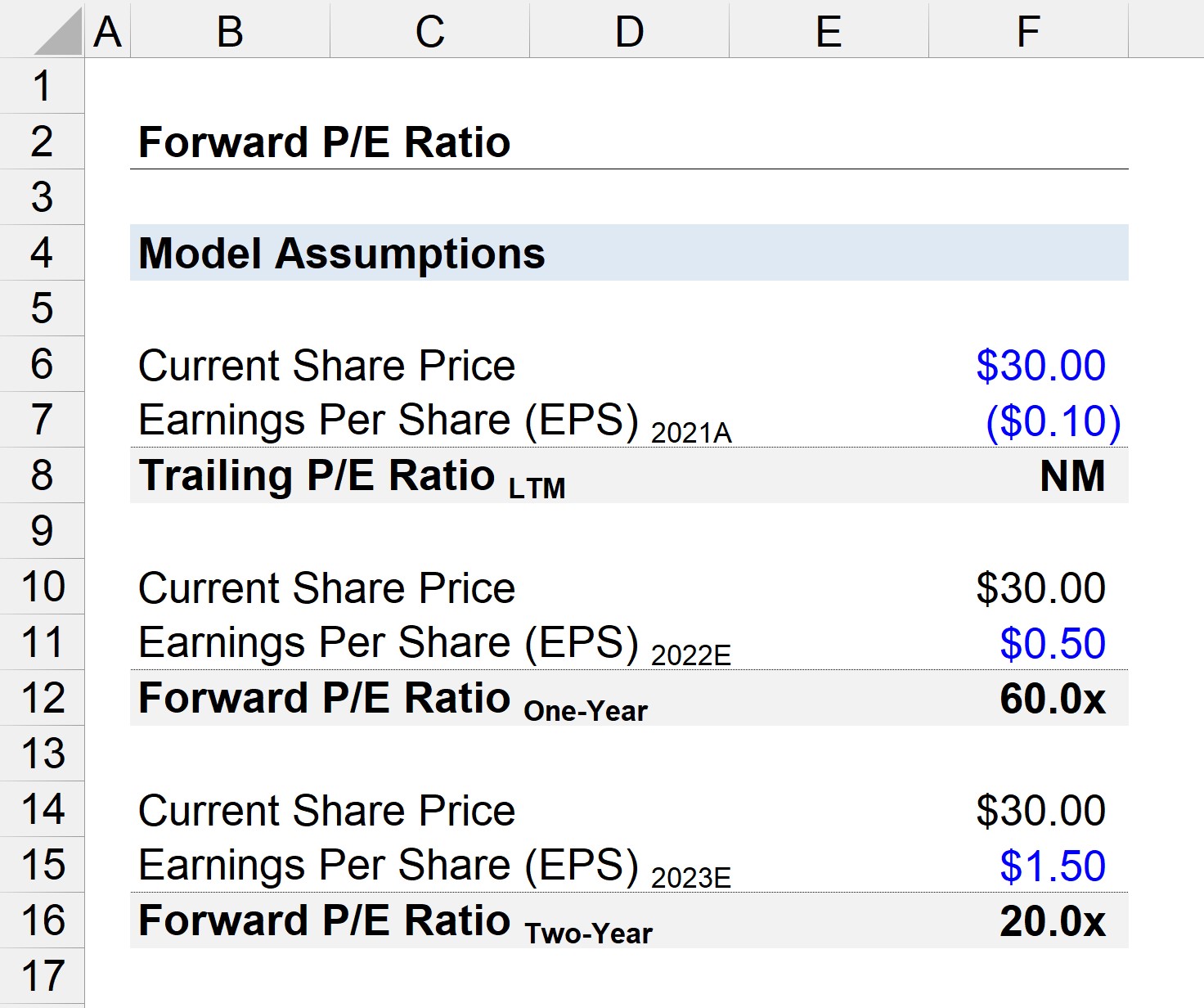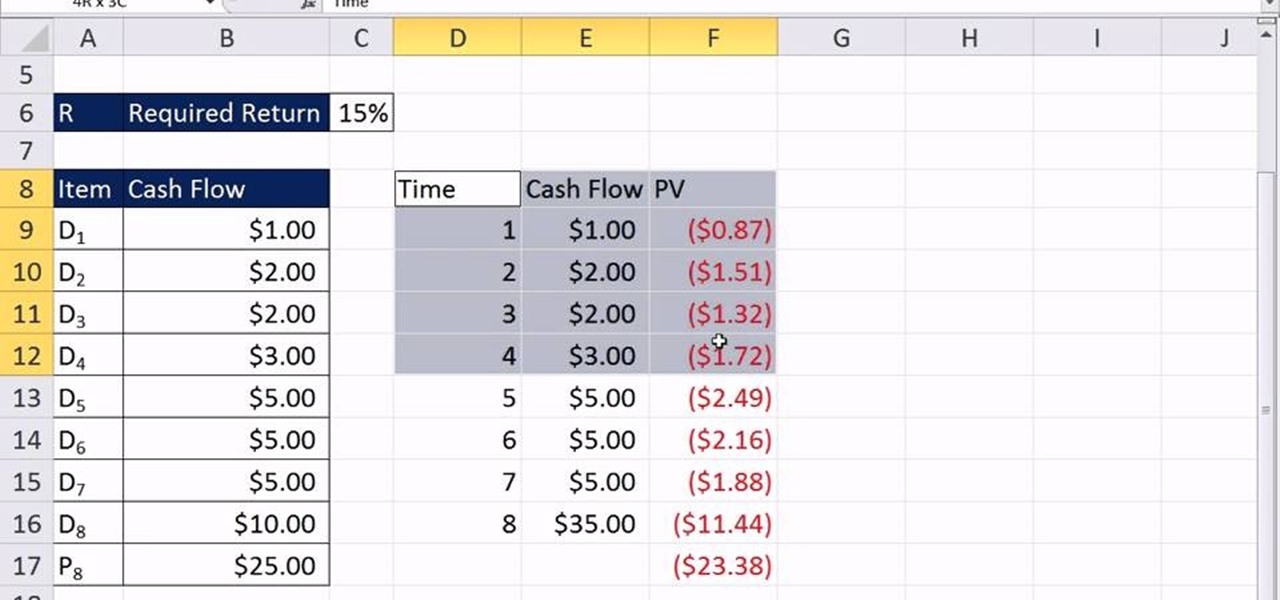

Finance
How To Calculate Cumulative Cash Flow
Published: December 21, 2023
Learn how to calculate cumulative cash flow in finance and effectively manage your financial resources.
(Many of the links in this article redirect to a specific reviewed product. Your purchase of these products through affiliate links helps to generate commission for LiveWell, at no extra cost. Learn more)
Table of Contents
- Introduction
- Definition of Cumulative Cash Flow
- Importance of Calculating Cumulative Cash Flow
- Basic Formula for Calculating Cumulative Cash Flow
- Step-by-Step Guide to Calculate Cumulative Cash Flow
- Example Calculation
- Factors Affecting Cumulative Cash Flow
- Limitations of Cumulative Cash Flow Analysis
- Conclusion
Introduction
Welcome to our comprehensive guide on how to calculate cumulative cash flow. In the realm of finance, cash flow is a crucial metric that reflects the inflow and outflow of money within a business or investment. Cumulative cash flow takes the analysis a step further, providing a holistic view of the net cash position over a period of time.
Understanding cumulative cash flow is essential for individuals and businesses looking to assess their financial health, plan for future endeavors, and make informed investment decisions. By evaluating the total cash position over time, stakeholders can determine the profitability, sustainability, and growth potential of a venture.
In this article, we will define cumulative cash flow, discuss its importance, provide a basic formula for calculation, and guide you through the step-by-step process. We will also explore an example calculation to illustrate the practical application of this financial metric. Additionally, we will discuss the factors that can affect cumulative cash flow and outline some limitations to be aware of when interpreting the results.
Whether you are a business owner, investor, or simply interested in understanding the financial dynamics of a company or project, mastering the calculation of cumulative cash flow is an invaluable skill. So, let’s dive in and unlock the power of this financial modeling tool!
Definition of Cumulative Cash Flow
Cumulative cash flow refers to the total amount of cash generated or consumed by a business or investment over a specified period of time. It takes into account both the inflow (income) and outflow (expenses) of cash and provides a running total of the net cash position.
Unlike regular cash flow analysis, which focuses on the cash flow for a specific period, cumulative cash flow accumulates the cash flows over time. This allows stakeholders to track the overall financial progress and liquidity of a business or investment.
Cumulative cash flow can be presented as a line graph or table, showing the cash position at each point in time. Positive cash flow indicates that the business or investment is generating more cash than it is spending, while negative cash flow indicates a deficit where more cash is being spent than generated.
It is important to note that cumulative cash flow considers all cash transactions, including operating activities (such as revenue and expenses), financing activities (such as loans and investments), and investing activities (such as buying or selling assets).
Cumulative cash flow is a valuable tool for evaluating the financial health and sustainability of a business or investment. By analyzing the trend of the cumulative cash flow, stakeholders can assess the ability of the entity to meet financial obligations, maintain liquidity, and generate profits over time.
Now that we have a clear understanding of what cumulative cash flow entails, let’s explore why it is important in financial analysis.
Importance of Calculating Cumulative Cash Flow
The calculation of cumulative cash flow holds significant importance in financial analysis and decision-making. It provides valuable insights into the financial health and sustainability of a business or investment. Here are some key reasons why calculating cumulative cash flow is essential:
- Financial Health Assessment: Cumulative cash flow helps stakeholders evaluate the overall financial position of a company or investment. By tracking the net cash position over time, it offers a comprehensive view of the entity’s ability to generate cash, cover expenses, and repay debts. Positive cumulative cash flow signals financial stability, while negative cumulative cash flow may indicate potential liquidity issues or financial distress.
- Long-Term Planning: The analysis of cumulative cash flow enables businesses to plan for the future. By understanding the cash inflows and outflows, companies can make informed decisions about budgeting, investing, and expansion. Cumulative cash flow forecasts help identify periods of positive cash flow, allowing businesses to allocate resources effectively and implement growth strategies.
- Investment Evaluation: Investors use cumulative cash flow analysis to assess the financial viability of potential investments. By examining the past cash flow patterns, investors can evaluate the profitability and sustainability of a project or company. Positive cumulative cash flow indicates a healthy investment with a high likelihood of generating returns, while negative cumulative cash flow may raise concerns about the project’s feasibility.
- Loan Repayment Estimation: For businesses with outstanding loans, calculating cumulative cash flow is critical for estimating the ability to make loan repayments. Lenders often rely on cumulative cash flow analysis to assess the borrower’s ability to honor their financial obligations. This allows businesses to plan their repayment strategies and ensure they have sufficient cash flow to meet their loan obligations.
- Identifying Cash Flow Trends: Cumulative cash flow analysis helps identify patterns and trends in cash flow. By examining the cumulative cash flow graph or table, stakeholders can spot periods of cash surplus and cash deficits. This information is valuable for making adjustments in business operations, managing cash reserves, and identifying potential areas of improvement.
In summary, understanding and calculating cumulative cash flow provides crucial insights into the financial strength, planning capabilities, and future prospects of a business or investment. It is an essential tool for financial analysis, strategic decision-making, and evaluating the sustainability and profitability of ventures.
Now that we recognize the importance of calculating cumulative cash flow, let’s delve into the basic formula for its calculation.
Basic Formula for Calculating Cumulative Cash Flow
The calculation of cumulative cash flow involves summing up the cash flows over a specific period of time to determine the net cash position. The basic formula for calculating cumulative cash flow is as follows:
Cumulative Cash Flow = Beginning Cash Balance + Net Cash Flow
The beginning cash balance represents the cash on hand at the start of the period under consideration. This could be the opening cash balance of a specific month, quarter, or year. The net cash flow, on the other hand, is the difference between the total cash inflows and the total cash outflows during the specified period.
To calculate the net cash flow, you subtract the total cash outflows from the total cash inflows:
Net Cash Flow = Total Cash Inflows – Total Cash Outflows
Cash inflows typically include revenue from sales, loans, investments, and any other sources of money coming into the business. Cash outflows include expenses, loan payments, supplies, salaries, and any other expenses that involve cash leaving the business.
By adding the beginning cash balance to the net cash flow, you obtain the cumulative cash flow, which represents the net cash position at the end of the specified period. This gives you an overview of the overall cash flow situation and helps you analyze the financial progress or decline of a business or investment over time.
It’s important to note that cumulative cash flow calculations are usually performed on a month-by-month or year-by-year basis, depending on the level of detail required for analysis. By tracking the cumulative cash flow over multiple periods, you can assess the trend and identify cash flow patterns that may impact your financial decision-making.
Next, let’s walk through a step-by-step guide on how to calculate cumulative cash flow in practice.
Step-by-Step Guide to Calculate Cumulative Cash Flow
Calculating cumulative cash flow involves a straightforward process that can be broken down into several steps. By following this step-by-step guide, you can accurately determine the cumulative cash flow for a specific period of time:
- Gather Cash Flow Data: Collect all relevant financial data, including cash inflows and outflows, for the period you want to analyze. This data should include revenue, expenses, loan payments, investments, and any other relevant cash transactions.
- Determine Beginning Cash Balance: Identify the cash balance at the beginning of the period. This can be obtained from your financial records, such as the previous period’s closing cash balance or opening cash balance for the particular period under consideration.
- Calculate Net Cash Flow: Subtract the total cash outflows from the total cash inflows for the period. This will give you the net cash flow, which represents the difference between the cash received and the cash spent during the specified time frame.
- Add Beginning Cash Balance and Net Cash Flow: Add the beginning cash balance to the net cash flow. This will give you the cumulative cash flow at the end of the period, indicating the net cash position after accounting for all cash inflows and outflows.
- Repeat for Each Period: If you want to calculate cumulative cash flow for multiple periods, repeat the above steps for each period, adjusting the beginning cash balance based on the previous period’s cumulative cash flow.
- Plot Cumulative Cash Flow: Once you have calculated the cumulative cash flow for each period, you can plot the data on a line graph or create a table to visualize the cash flow trend over time. This will help you identify periods of positive and negative cumulative cash flow, allowing you to analyze the financial progress of the business or investment.
By following these steps, you can accurately calculate and interpret the cumulative cash flow, gaining valuable insights into the financial performance and liquidity of a business or investment. It is important to update and review the cumulative cash flow regularly to monitor the financial health and make well-informed financial decisions.
Now, let’s explore an example calculation to illustrate the practical application of cumulative cash flow in a real-world scenario.
Example Calculation
Let’s walk through an example calculation to demonstrate how cumulative cash flow is determined. Consider a small retail business that operates on a monthly basis. We will calculate the cumulative cash flow for the first quarter of the year (January, February, and March).
Step 1: Gather Cash Flow Data
For this example, let’s assume the following cash inflows and outflows for each month:
- January: Cash inflow of $10,000 from sales. Cash outflow of $5,000 for expenses.
- February: Cash inflow of $8,000 from sales. Cash outflow of $4,000 for expenses.
- March: Cash inflow of $12,000 from sales. Cash outflow of $6,000 for expenses.
Step 2: Determine Beginning Cash Balance
Assume that the beginning cash balance in January is $3,000, which is the closing cash balance from the previous year.
Step 3: Calculate Net Cash Flow
For each month, calculate the net cash flow by subtracting the cash outflows from the cash inflows:
- January: $10,000 – $5,000 = $5,000 net cash flow
- February: $8,000 – $4,000 = $4,000 net cash flow
- March: $12,000 – $6,000 = $6,000 net cash flow
Step 4: Add Beginning Cash Balance and Net Cash Flow
For each month, add the beginning cash balance to the net cash flow to obtain the cumulative cash flow:
- January: $3,000 + $5,000 = $8,000 cumulative cash flow
- February: $8,000 (previous cumulative cash flow) + $4,000 = $12,000 cumulative cash flow
- March: $12,000 (previous cumulative cash flow) + $6,000 = $18,000 cumulative cash flow
The final cumulative cash flow for the first quarter of the year (January, February, and March) is $18,000.
Step 5: Plot Cumulative Cash Flow
Once you have calculated the cumulative cash flow for each month, you can plot this data on a graph or create a table to visualize the cumulative cash flow trend over time. This will provide a clear picture of the cash flow pattern and help in assessing the financial progress of the business.
By performing such calculations regularly, businesses can gain insights into their financial performance, evaluate their liquidity, and make informed decisions for future growth and stability.
Now that we’ve seen an example calculation, let’s explore some of the factors that can affect cumulative cash flow.
Factors Affecting Cumulative Cash Flow
Cumulative cash flow can be influenced by various factors that impact the inflow and outflow of cash within a business or investment. Understanding these factors is crucial for accurate analysis and interpretation of cumulative cash flow. Here are some key factors that can affect cumulative cash flow:
- Seasonal Variations: Businesses that experience seasonal fluctuations in revenue may have significant impacts on cumulative cash flow. For example, a retail business may see higher cash inflows during holiday seasons and lower inflows during off-peak periods. These variations can greatly impact the overall cash position over time.
- Customer Payment Terms: The terms at which customers pay for products or services can influence cash inflows. If a business offers credit to customers, it may experience delayed cash inflows, affecting the cumulative cash flow. Conversely, businesses that receive upfront payments or prompt payment terms may have more stable and predictable cash inflows.
- Vendor and Supplier Payments: The payment terms negotiated with vendors and suppliers can impact cash outflows. Delayed payment terms can provide businesses with more flexibility, allowing them to improve their cash flow position. However, businesses that have strict payment terms with vendors may experience faster cash outflows, affecting cumulative cash flow.
- Market Conditions: External factors, such as changes in market demand, pricing, or competition, can impact a business’s cash flow. For instance, an economic downturn or industry disruption may lead to lower sales and revenue, affecting cash inflows and ultimately the cumulative cash flow.
- Operating Expenses: The level of operating expenses incurred by a business directly impacts cash outflows. Higher expenses, such as increased rent, salaries, or inventory costs, can reduce cash flow and decrease the cumulative cash flow over time. Businesses that effectively manage and control expenses tend to have healthier cash flow positions.
- Investment and Financing Activities: Cash inflows and outflows related to investments and financing activities can significantly impact cumulative cash flow. For example, taking on additional debt to fund business expansion can result in increased cash inflows initially, but the subsequent loan payments may lead to negative cumulative cash flow. Similarly, investments in new assets or business ventures can impact cash flow dynamics.
It’s important to monitor these factors and their effects on cumulative cash flow. By understanding how these variables influence cash flows, businesses and investors can make informed decisions, adjust strategies, and take appropriate actions to ensure the financial stability and sustainability of their operations.
Now that we have explored the factors that affect cumulative cash flow, let’s discuss the limitations associated with cumulative cash flow analysis.
Limitations of Cumulative Cash Flow Analysis
While cumulative cash flow analysis is a valuable tool for assessing financial health and making informed decisions, it is essential to recognize its limitations. Understanding these limitations will help stakeholders interpret the results accurately and use them in conjunction with other financial metrics. Here are some notable limitations of cumulative cash flow analysis:
- Short-Term Focus: Cumulative cash flow analysis primarily focuses on the short-term financial position of a business or investment. It may not provide a comprehensive view of the long-term profitability or sustainability. To complement cumulative cash flow analysis, other metrics like return on investment (ROI) and net present value (NPV) should be considered for a complete financial evaluation.
- Lack of Quality Assessment: Cumulative cash flow analysis does not consider the quality or timing of cash inflows and outflows. It treats all cash transactions the same, regardless of when they occur or whether they are sustainable in the long run. This oversight may lead to a misleading interpretation of the financial health of the entity.
- Non-Cash Items Exclusion: Cumulative cash flow analysis focuses solely on cash transactions and does not account for non-cash items such as depreciation, amortization, or non-cash expenses. While these items may not affect the actual cash flow, they have an impact on the overall financial performance. Therefore, it is important to consider other financial statements, such as the income statement and balance sheet, for a comprehensive analysis.
- Timing of Cash Flows: Cumulative cash flow analysis does not consider the timing of cash flows. For example, it treats cash received early in the period the same as cash received towards the end of the period. This oversimplification may not accurately reflect the cash flow dynamics and may not capture the true financial situation.
- External Factors and Assumptions: Cumulative cash flow analysis does not account for external factors, such as changes in the market or regulatory environment. Additionally, it relies on assumptions about future cash flows, which may not always align with reality. These external factors and assumptions can introduce uncertainties, affecting the accuracy and reliability of the cumulative cash flow analysis.
While cumulative cash flow analysis has limitations, it remains a valuable tool in financial analysis. When used in conjunction with other financial metrics and combined with a thorough understanding of the business or investment context, it can offer valuable insights into cash flow trends and assist in making informed decisions.
Now that we have explored the limitations, let’s conclude this guide on how to calculate cumulative cash flow.
Conclusion
In conclusion, calculating cumulative cash flow is a fundamental aspect of financial analysis. It provides a comprehensive view of the net cash position over time and helps stakeholders assess the financial health, liquidity, and sustainability of a business or investment.
By following the step-by-step guide outlined in this article, businesses and investors can accurately calculate cumulative cash flow and gain valuable insights into their financial performance. Cumulative cash flow allows for better long-term planning, investment evaluation, and loan repayment estimation.
However, it’s important to understand the limitations of cumulative cash flow analysis. It should be used in conjunction with other financial metrics and with an awareness of external factors and assumptions that may impact the results.
Ultimately, mastering the calculation and interpretation of cumulative cash flow empowers individuals and businesses to make informed financial decisions, optimize cash flow management, and ensure the long-term success of their ventures.
We hope this comprehensive guide has provided you with a solid understanding of how to calculate cumulative cash flow and its significance in financial analysis. Remember to continuously monitor and analyze cumulative cash flow to stay informed about your financial position and make proactive strategic decisions.
Thank you for reading, and we wish you success in your financial endeavors!














